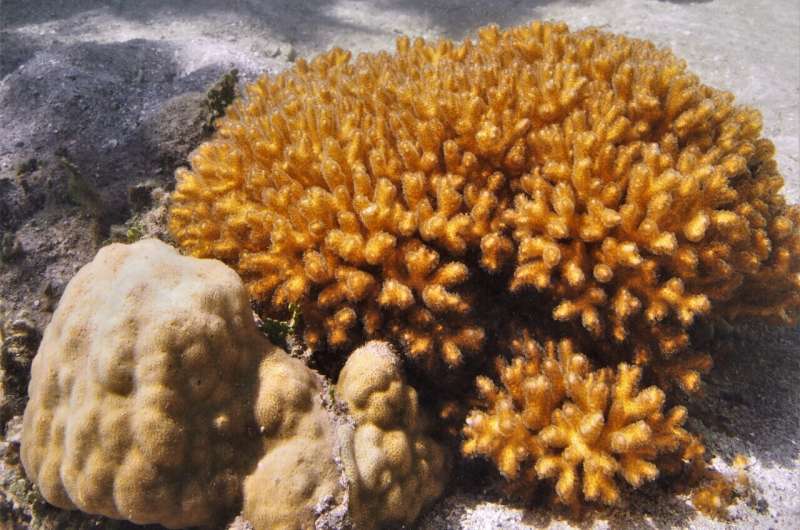This article has been reviewed according to Science X's editorial process and policies. Editors have highlighted the following attributes while ensuring the content's credibility:
fact-checked
peer-reviewed publication
trusted source
proofread
New research highlights risks of selective adaptation in extreme coral habitats

Resilient corals, often referred to as "super corals," have recently been seen as potential saviors in the face of climate change and its detrimental effects on coral reefs.
Now, a team of scientists from the University of Technology Sydney (UTS) and the University of Haifa, Israel is working to better understand these corals in order to develop strategies to protect fragile ecosystems such as the Great Barrier Reef.
UTS scientist Dr. Emma Camp, co-lead researcher on the study recently published in the journal Nature Communications, says the findings have significant implications for the future survival and suitability of these resilient corals in restoration projects.
"Understanding the mechanisms by which corals adapt and survive in extreme habitats is crucial for developing effective conservation strategies," says Dr. Camp.
The study primarily focuses on the reef-building coral species Porites lutea which UTS researchers have previously discovered thrives in both mangrove and reef sites.
Mangrove lagoons are characterized by hostile conditions similar to future climate predictions for coral reefs: the water is warmer, more acidic and has lower oxygen levels.
"While the discovery of 'super corals' in mangrove lagoons initially appeared promising, our research highlights potential risks associated with selective adaptation, including reduced genetic diversity and compromised skeletal properties."
The corals residing in mangrove lagoons, which experience significant variations in multiple environmental conditions, display stress-tolerance traits.
However, these adaptations come at a cost: one notable discovery was the reduction in genetic diversity and gene expression variability among mangrove corals.
Professor Tali Mass, co-lead researcher on the study from the University of Haifa said, "While this allows them to survive in the current harsh conditions, it may limit their ability to cope with future environmental stressors."
The study also discovered alterations in the skeletal structure of Porites lutea found in mangrove lagoons.
These corals exhibited increased porosity and reduced density, potentially compromising their long-term survival if relocated to high wave sites.
Dr. Camp says the findings challenge existing notions surrounding the resilience of corals.
"While there is little doubt that 'super corals' have a role to play in coral restoration programs, maintaining genetic diversity and carefully consideration of the suitability of corals adapted to extreme environments is vital when planning restoration efforts," she said.
Researchers from UTS are now studying how best to integrate "super corals" in activities of the Coral Nurture Program to maintain genetic diversity and minimize risk.
More information: Emma Camp et al, The role and risks of selective adaptation in extreme coral habitats, Nature Communications (2023). DOI: 10.1038/s41467-023-39651-7
Journal information: Nature Communications
Provided by University of Technology, Sydney




















